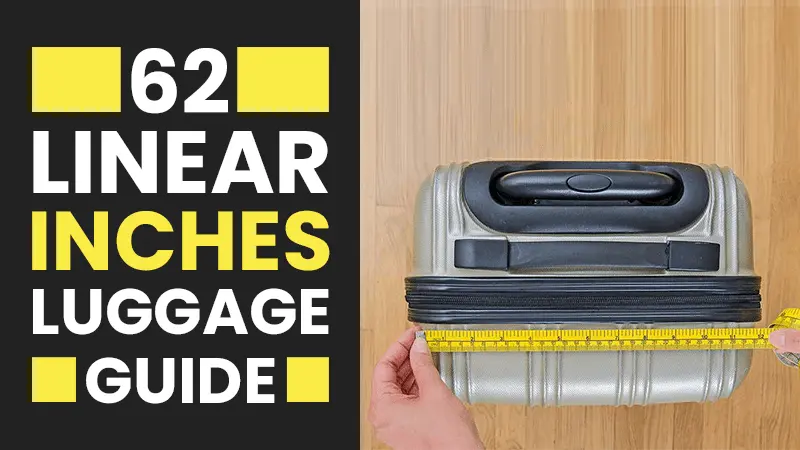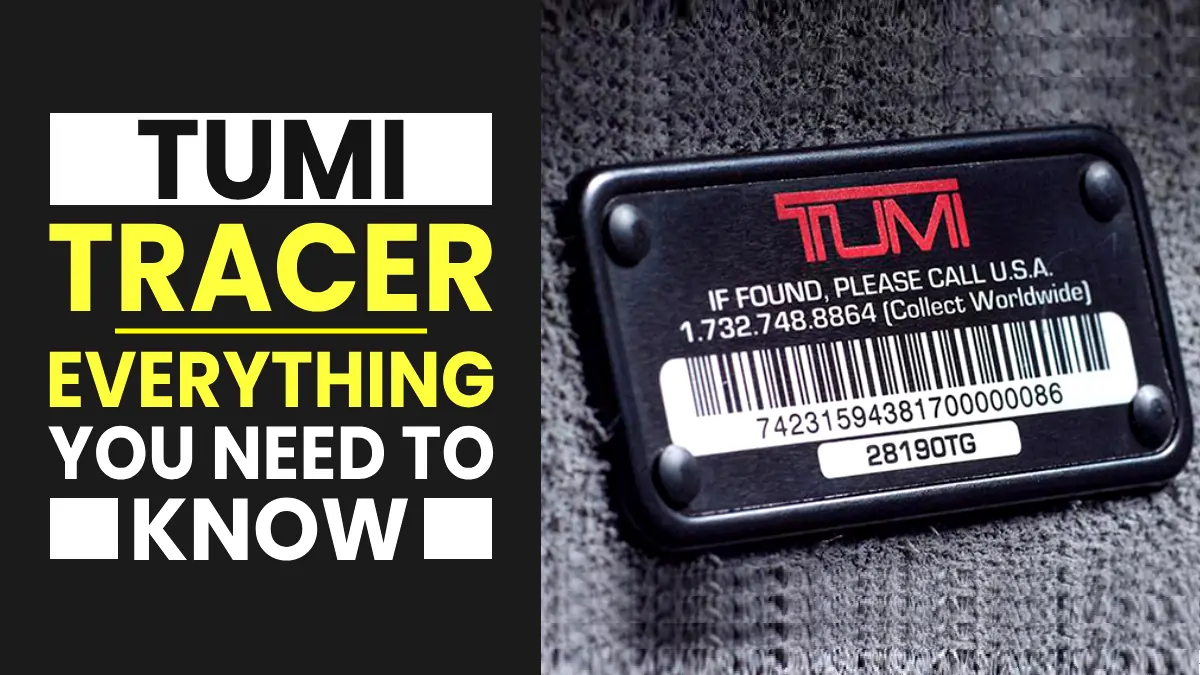What Are 62 Linear Inches Luggage? Step-By-Step 2024 Guide
If you’ve come across the term “62 linear inches” and are worried about what it exactly means and how to ensure your luggage meets this 62 linear inches requirement, worry not! This article has covered you.
We’ll guide you through everything you need to know about 62 linear inches for your luggage. This includes a detailed explanation of how to calculate linear inches accurately as well as whether a 28-inch suitcase qualifies as 62 linear inches or not.
By the end of this post, you’ll have all the information you need to confidently measure your luggage in linear inches for your next flight. We’ve covered step-by-step instructions and illustrations to make it simple for you.
Table of Contents
What does 62 linear inches mean?
In simple words, 62 linear inches is a measurement commonly used by many airlines to determine if your luggage falls within their size limits.

Linear Inches = Length + Width + Height
It’s essential to know that most airlines use this linear inch rule to measure the size of checked luggage. However, very few airlines use this rule for carry-on luggage.
During travel, you’re allowed to bring a suitcase with a maximum of 62 linear inches. We would not recommend you bring a piece of luggage that goes beyond 62 linear inches because it may cause problems and make you feel uncomfortable.
There won’t be any problem if your luggage lies within this linear size, but If your luggage goes beyond the size limit, which is 62 linear inches, it won’t be accepted by most airlines, and you may have to face trouble.
Next Recommendation: Are Luggage Covers TSA Approved?
Why do airlines implement the 62-linear-inch rule?
Airlines implement the linear inches rule because of the limited available space on planes. With a variety of luggage shapes and sizes, their main purpose is to efficiently accommodate all suitcases and bags within the confined space of the aircraft.
To fulfill this purpose, they apply the 62-linear-inch rule, which ensures that the luggage dimensions remain within specific limits and can be properly fit within the planes.
With the implementation of this rule, airlines are efficiently able to utilize the available space, ensuring the boarding process is seamless and all passengers’ belongings are safe during travel.
How do you calculate linear inches for luggage?
Airlines specify the sizes of luggage and bags in terms of linear dimensions. For most airlines, the limit for checked bags is 62 linear inches.
However, it’s important to note that this doesn’t mean all suitcases and bags are the same in terms of size and dimensions. A suitcase with 62 linear inches may look different in terms of size because of different lengths, heights, and widths.
Now, you might wonder how to calculate linear inches and what 62 linear inches look like.
To calculate linear inches for luggage, you have to measure the length, width, and depth of the bag in inches, including the handle and wheels. Then, simply add all three dimensions together. The resulting total measurement is referred to as the “linear inches.”
Recommended: Do Airlines Prefer Hard or Soft Luggage
Step-by-Step Guide on How to Measure Luggage for Linear Inches
Measure the Length
Place one end of a measuring tape at the bottom of the luggage, near one of the front wheels or feet. Extend the tape to the other front wheels or feet of the bag, ensuring you include any protruding parts of the bag, such as a handle or an extended zipper.
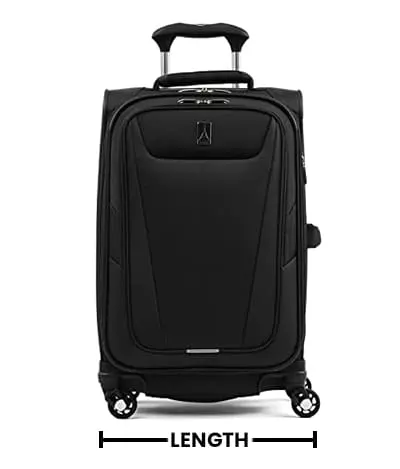
Measure the Width
Next, place one end of the measuring tape on one side of the luggage, near the bottom, and extend it to the opposite side of the bag. Again, make sure to include any protruding parts of the bag in this measurement.
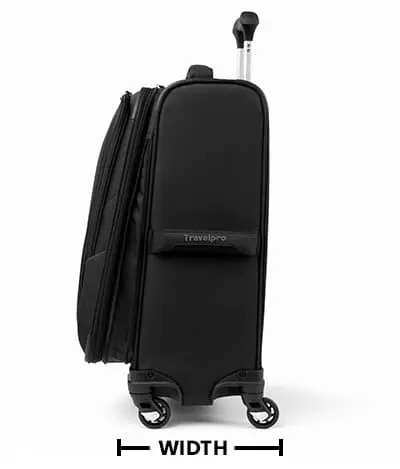
Measure the Height
Finally, place one end of the measuring tape at the bottom of the luggage, near one of the wheels or feet, and extend it to the top of the bag. This measurement should be taken perpendicular to the length and width measurements.
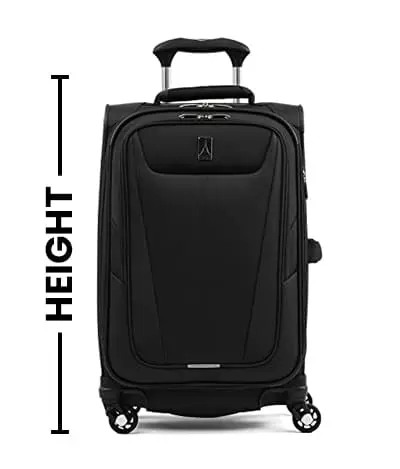
Add the Measurements
Once you’re done with all three measurements (length, width, and height), just add them together and round up to the nearest inch. This total is the linear inches of measurement of your luggage.

Compare with Airlines’ Size Limits
Check the linear inches of your luggage against the size limit set by the airline. Most airlines have a linear inch limit of around 45–62 inches. Make sure your bag falls within the limit before you travel to avoid any inconvenience.
It’s always recommended to measure your luggage before you leave for your trip to make sure that it complies with the size and weight restrictions set by airlines.
Also read: What Color Luggage is Best?
Some Practical Examples of 62 Linear Inches
Let us give you some examples to help you understand.
Airlines usually have a limit of 62 linear inches, or 158 cm, for the total length, height, and width of the luggage.
The Total length, height, and width should not exceed 62 inches, or 158 cm.
(Length + Height + Width ≤ 62 Inches or 158 cm)
Example 1: If a piece of luggage has a height of 30 inches, a length of 20 inches, and a width of 12 inches, the linear inches will be calculated by adding all three dimensions together: 30 + 20 + 12 = 62 linear inches.
Example 2: For another piece of luggage that comes with a height of 30.9 inches, a length of 17.5 inches, and a width of 12.9 inches, the linear inches would be 30.9 + 17.5 + 12.9 = 61.3. In this case, the measurement is less than 62 linear inches, which means it’s allowed and you won’t have to face any problems at the airport.
I hope these examples make it clearer for you.
What happens if my luggage goes beyond 62 linear inches?
If your luggage is only slightly larger than 62 linear inches by less than one inch, you might not face an additional fee. However, exceeding the size limit by more than one inch could result in extra fees for oversized luggage. These charges can be quite expensive.
Sometimes they can charge you for a piece of slightly bigger luggage too; that’s why it’s advised to stay within the size limits and restrictions set by airlines so that you can avoid any additional fees or charges and your luggage can be easily transported to the destination. This can be done by measuring your luggage ahead of time.
It’s best not to take any kind of risk in this matter because it can put you in trouble and make you feel uncomfortable during travel.
Must Read: Samsonite Freeform vs. Omni PC (Detailed Luggage Comparison)
Is a 28-inch suitcase 62 linear inches?
The relationship between 28-inch luggage and 62 linear inches can vary. This is because 62 linear inches represents the total sum of all three sides of a suitcase.
In some cases, the total of all three sides of a 28-inch suitcase may be below 62 linear inches, making it a suitable option according to the size limit, and sometimes they may exceed 62 linear inches.
Let us come up with two examples of different luggage to make it clear for you.
Example 1: Kenneth Cole Out Of Bounds 28-Inch Luggage
- Dimensions: 29.5” Height x 20.5” Width x 11.75” Depth
- Linear Inches: 29.5 + 20.5 + 11.75 = 61.75 Linear Inches
Example 2: Samsonite Omni PC 28-Inch Luggage
- Dimensions: 30.5″ Height x 21.5″ Width x 13.5″ Depth
- Linear Inches: 30.5 + 21.5 + 13.5 = 65.5 Linear Inches
As you can see, the first 28-inch Kenneth suitcase falls below 62 linear inches, making it acceptable with the airlines’ 62 linear inches rule, while the second 28-inch Omni PC suitcase from Samsonite exceeds the limit of 62 linear inches.
With the given example of the two suitcases, it’s very clear that sometimes a 28-inch suitcase may fall within 62 linear inches and sometimes it may not.
Recommended Reading: What does 80 linear inches mean for luggage?
What are 62 linear inches of luggage in cm?
62 linear inches of luggage is 157.48 centimeters. Let’s understand how it works.
When it comes to converting 62 linear inches to centimeters, we must know that one inch is equal to 2.54 centimeters.
As linear inches refer to the sum of the luggage’s height, width, and length, we can simply convert 62 linear inches into centimeters by multiplying it by 2.54.
So, 62 × 2.54 = 157.48 centimeters
Therefore, the 62 linear inches rule for any luggage equals 157.48 centimeters.
Also Read: Samsonite Freeform Hardside Luggage Review
Final Verdict on 62 Linear Inches Luggage
In this post, we have discussed the meaning and importance of understanding the 62-linear-inch luggage size restriction. We have come up with a detailed, step-by-step guide on how to measure your luggage in linear inches.
Before your next trip, we strongly recommend you check the measurements of your luggage to see whether they meet the requirements of your airline or not.
I’ve made my utmost efforts to guide you in the best possible way. I hope this detailed article helped you.
Keep this post handy as a reference guide when packing for future trips.
I wish you a safe and happy journey.
Next Recommendation: Samsonite Omni PC vs. Omni 2
Frequently Asked Questions on 62 Linear Inches
Do the 62 linear inches include wheels?
Yes, generally, most airlines do include wheels and handles when measuring luggage or any traveling bag, but there are some airlines that do have specific measurements that exclude wheels and handles, so it’s essential to double-check before you travel.
An oversized suitcase may cause additional fees, or sometimes you may be forced to leave some of your belongings behind. To avoid any inconvenience, it’s always a good idea to measure your luggage and check the airline restrictions in advance.
What are the dimensions of 62 linear luggage?
A 62-inch suitcase comes in various shapes due to its different lengths, widths, and heights. It doesn’t mean that all the luggage should be of the same size and dimensions.
The key is that when putting all three sides (length, width, and height) together, it should not exceed 62 inches. Generally, a 62-inch linear suitcase is rectangular in shape, but it can be of any shape as long as the total measurement remains below 62 inches.
So whether it’s a traditional rectangular suitcase or luggage with a unique shape, as long as it falls within the 62-line-inch limit, it’s good to go!
Do airlines accept 28-inch luggage?
In general, the largest size that can be accepted is 62 linear inches. For 28-inch luggage to be accepted, the total sum of its length, width, and height must be below or equal to 62 inches. If the sum of these dimensions exceeds 62 linear inches, the luggage won’t be accepted.
It’s important to keep in mind that not all 28-inch luggage pieces are the same. Some 28-inch luggage falls below the 62-linear-inch limit and will be accepted, while others might go beyond the 62-linear-inch limit and won’t be accepted.
So always make sure to check your 28-inch luggage to see whether it complies with the 62-linear-inches rule or not.

